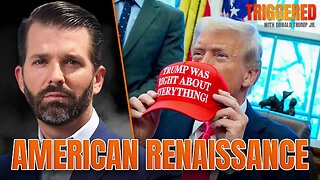Premium Only Content

Learn about Nuclear Magnetic Resonance (NMR) Spectroscopy -SUBBED- ALL PARTS
:::::::Nuclear Magnetic Resonance (NMR) spectroscopy is a powerful analytical technique used to determine the structure, dynamics, and environment of molecules, particularly in organic chemistry. In NMR, nuclei of certain isotopes (such as hydrogen-1 or carbon-13) are exposed to a strong magnetic field and radiofrequency radiation, which causes them to resonate at specific frequencies. The resulting NMR spectrum provides detailed information on the number, type, and arrangement of atoms within a molecule. NMR is invaluable for identifying molecular structures, studying chemical bonding, and investigating molecular dynamics in solutions and solids.
Infrared (IR) spectroscopy is an analytical technique used to identify and study chemical substances based on the absorption of infrared light. In IR spectroscopy, a sample is exposed to infrared radiation, which causes molecular vibrations, such as stretching and bending of chemical bonds. Different functional groups within a molecule absorb specific wavelengths of infrared light, resulting in a unique spectrum that acts as a "fingerprint" for the compound. This technique is commonly used for identifying functional groups, analyzing molecular structures, and determining sample purity.
-
 39:25
39:25
Donald Trump Jr.
2 hours agoFBI's Incredible Crime Crackdown, Plus my Message to ABC!! | TRIGGERED Ep.283
76.9K78 -
 LIVE
LIVE
OhHiMark1776
3 hours ago🟠 10-16-25 ||||| Act 3 Continue ||||| Baldur's Gate 3 (2023)
49 watching -
 LIVE
LIVE
The Rabble Wrangler
18 hours agoBattlefield 6 with The Best in the West
50 watching -
 1:02:05
1:02:05
BonginoReport
3 hours agoMusic Stars Go Viral For Anti-ICE Rants - Nightly Scroll w/ Hayley Caronia (Ep.157)
29.7K26 -
 LIVE
LIVE
NostalgiaMicrodosing
2 hours agoLIVE - Digital Déjà Vu
35 watching -
 LIVE
LIVE
GritsGG
6 hours agoRANKED GRIND! Most Wins in WORLD! 3734+!
33 watching -
 1:05:06
1:05:06
TheCrucible
3 hours agoThe Extravaganza! EP: 55 with guest co-host Rob Noerr (10/16/25)
82K4 -
 1:24:30
1:24:30
Kim Iversen
4 hours agoSpotify Bans Nick Fuentes — But the Shift Can’t Be Stopped
31K54 -
 DVR
DVR
Robert Gouveia
3 hours ago🚨 John Bolton INDICTED!! Antifa Terrorists ARRESTED!! Shutdown Firings FIGHT!
25.4K6 -
 2:21:57
2:21:57
MattMorseTV
6 hours ago $74.84 earned🔴Trump's EMERGENCY Oval Office ANNOUNCEMENT.🔴
124K91